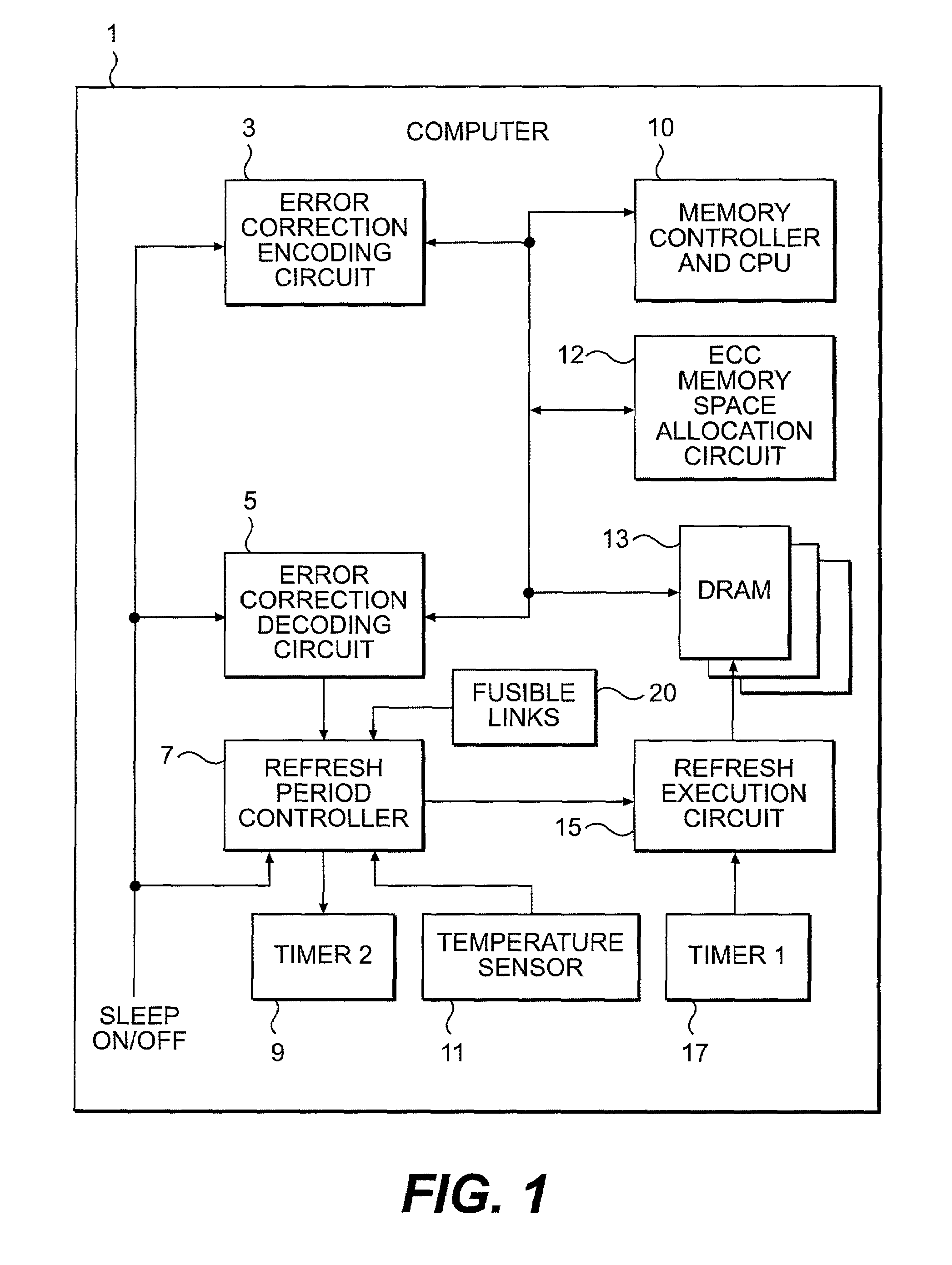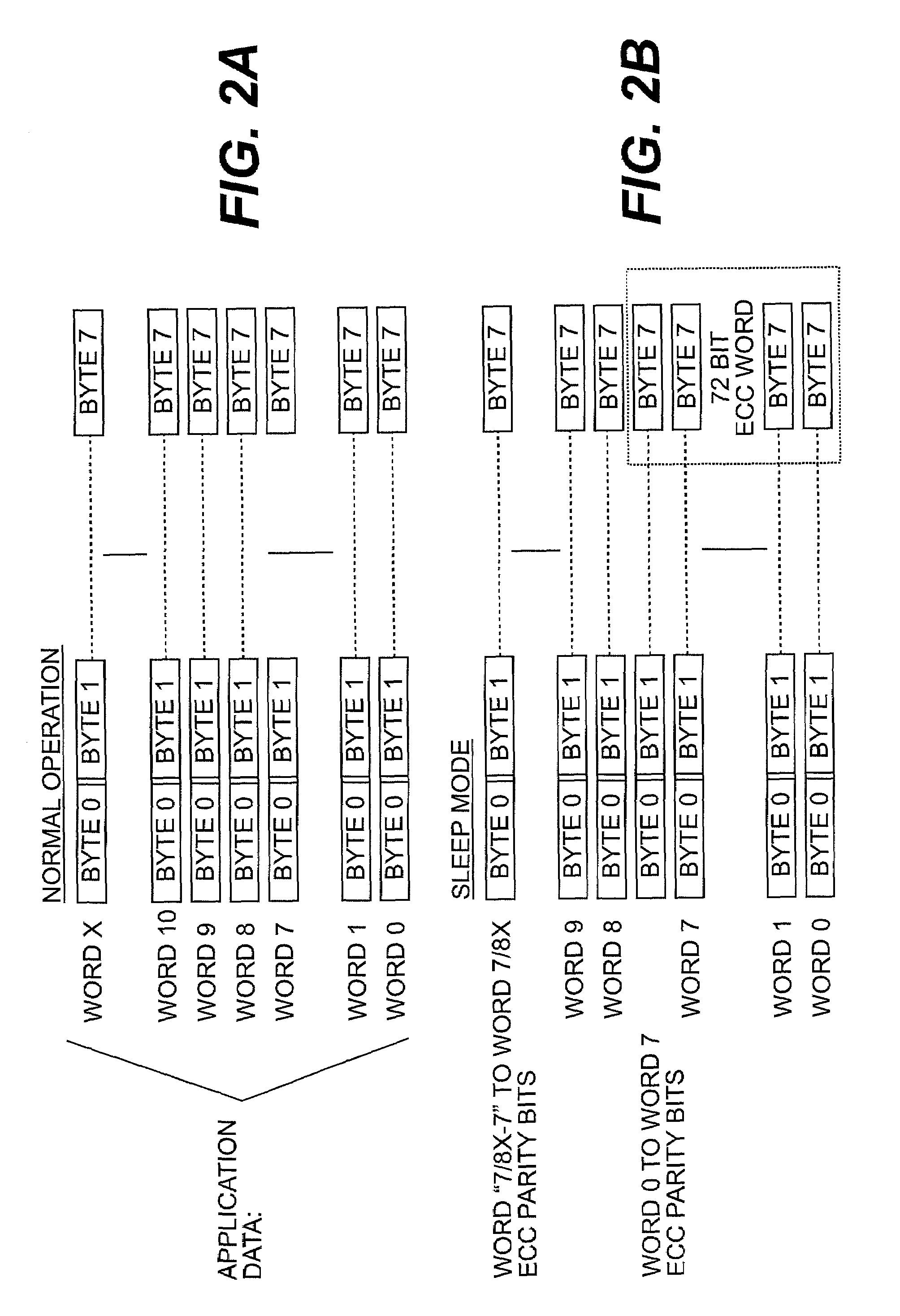Check bit free error correction for sleep mode data retention
a technology of sleep mode and error correction, applied in the field of dynamic random access memories of semiconductors, can solve the problems of data loss, large power consumption of display screens and mechanical disk drive systems, and low manufacturing cost of drams, so as to reduce the refresh rate and save power
- Summary
- Abstract
- Description
- Claims
- Application Information
AI Technical Summary
Benefits of technology
Problems solved by technology
Method used
Image
Examples
Embodiment Construction
[0018]Referring now to the drawings, and more particularly to FIG. 1, there is shown a block diagram illustrating a computer 1 including a memory system according to the present invention. A plurality of DRAMs 13 are connected to a memory controller and a CPU 10, an error correction encoding circuit 3, an error correction decoding circuit 5, and a refresh execution circuit 15. The error correction encoding circuit 3 and the error correction decoding circuit 5 receive sleep ON and OFF signals. The refresh period controller 7 is connected to the error correction decoding circuit 5, a timer 2 (9), and a temperature sensor 11. The refresh period controller 7 also receives sleep ON and OFF signals. The refresh execution circuit 15 is connected to the refresh period controller 7 and a first timer 17. In operation, the first timer 17 times the refresh period in active mode. When in a sleep mode, the second timer 9 is used to time the reduced refresh rate. If the temperature sensor 11 is em...
PUM
 Login to View More
Login to View More Abstract
Description
Claims
Application Information
 Login to View More
Login to View More - R&D
- Intellectual Property
- Life Sciences
- Materials
- Tech Scout
- Unparalleled Data Quality
- Higher Quality Content
- 60% Fewer Hallucinations
Browse by: Latest US Patents, China's latest patents, Technical Efficacy Thesaurus, Application Domain, Technology Topic, Popular Technical Reports.
© 2025 PatSnap. All rights reserved.Legal|Privacy policy|Modern Slavery Act Transparency Statement|Sitemap|About US| Contact US: help@patsnap.com



